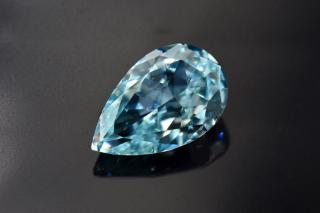Once you have chosen the fine diamond, fancy colored diamond or gorgeous gemstone you want for a ring - a ring for whatever reason, precious gems are not just reserved for engagement rings - you'll need to decide on a setting material, and for many people that choice is between yellow gold, white gold and rose gold.
But while you can see the difference between these precious metals maybe you are wondering what the real difference between the three is, and which of them is 'best' or 'most valuable.' Our short guide will hopefully answer those questions - and more - so that you can make a more informed choice.
Gold Basics
To begin, let's recap a few basic facts about gold in general:
- Gold, in its purest form is dense and yellowish, as well as quite flexible. In fact, it's the most 'malleable' of all the precious metals.
- Gold naturally occurs as nuggets, or 'grains of nuggets' in rocks and bodies of water all over the globe. It is usually mined from deep in the ground for mass commerce purposes.
- Most of the Earth's gold is, scientists believe, the result of asteroid impacts on the planet some four billion years ago.
- Gold is one of the least reactive metals, meaning that it is resistant to most acids.
- Gold has been used, across the millennia for everything from jewelry, fabric and cosmetics to a solid investment tool and, of course, coinage.
- Gold is universally measured in Karats. Pure gold is considered to be 24 karats.
Yellow Gold Vs. White Gold Vs. Rose Gold
So, what's really the difference between the types of gold you'll be offered as a setting for your beautiful diamond or precious gemstone? It's all in the alloy.
Yellow Gold
As we mentioned earlier, gold is naturally yellowish in color and so usually yellow gold won't tarnish, rust or corrode, and holds its color very well. However, it's still alloyed with base metals to give it the 'sturdiness' needed to turn it into jewelry. The 'yellower' gold is the purer it's' considered, but that being said it’s less durable. So, 18K yellow gold is more durable than 24K yellow gold.
White Gold
In the world of engagement rings, white gold has become the 'hot choice' over the last decade or so. It's created by alloying it with a 'white' base metal such as silver, zinc, palladium or nickel. White gold tends to be more durable than yellow gold, but, unlike yellow gold it's not hypoallergenic unless it is coated with a platinum-based metal.
This process is called rhodium plating and also makes the gold appear almost completely white. Over the course of the 'life' of a ring treated in this way the process may have to be repeated.
Rose Gold
Rose gold has that lovely pinkish hue as it is alloyed with copper. As copper itself is very sturdy this means that of the three, rose gold is the most 'durable' gold listed here. Like white gold it's not hypoallergenic though, so if copper has given you a problem in the past (rare, but it happens) this probably isn't the right choice for you.
Gold Versus Platinum
Another very popular metal for engagement rings is platinum. It is the heaviest and densest of the precious metals and as such is more durable than any of the golds we've covered here. Gram for gram they are usually around the price, but as platinum is heavier, a platinum ring will often cost more than gold.
In the end, your choice should come down to what most appeals to you and best suits the diamond or gemstone you've chosen. All three gold types - and platinum - make stunning jewelry, so the best advice we can offer? Go with your heart!








